A Self-Test, Self-Calibration and Self-Repair Methodology of Thermopile Infrared Detector
Abstract
:1. Introduction
2. Basic Principles and Analysis
2.1. The Principle of Infrared Thermopile Detector
2.2. Physical Stimulus and Electrical Stimulus Mechanism
2.3. One-Dimensional Thermal Steady-State Analysis Model of Self-Test
3. The Principle of Self-Test, Self-Calibration and Fault Repair
3.1. Self-Test
3.2. Self-Calibration
3.3. Fault Analysis and Fault Repair
3.3.1. Analysis of Thermopile Faults and Defects
3.3.2. Redundant Repair Yield Model
3.3.3. Fault Module Identification
3.3.4. Recalculate the Responsivity
4. The Design of Simulation
4.1. Establishment of the Equivalent Model of Electrical Stimulus and Physical Stimulus
- (i)
- Set the ambient temperature to and the heat flux from 0 W/m2 to 20,000 W/m2, then the relationship between the heat radiation and the output voltage can be obtained;
- (ii)
- Set the ambient temperature to and the voltage of heating resistor from 0 V to 2 V with a step of 0.1, then the relationship between the electrical stimulus and the output voltage can be obtained;
- (iii)
- Modulate the relationship between the radiation and electric power with the same output voltage.
4.2. Verification of Fault-Repair and Error Calculation
- (i)
- Obtain the fault data set with N defects with simulation, including M modules output data and location of defects;
- (ii)
- Train the BP neural network with the outputs data of M modules as the inputs and the fault location as the outputs;
- (iii)
- Calculate the accuracy of the predicted faults under different numbers of modules with the test samples;
- (iv)
- Calculate the average responsivity error after fault repair with M = 6 modules.
4.3. Calculation Yield
5. Result
5.1. Establishment of the Equivalent Model of Electrical Stimulus and Physical Stimulus
5.2. Prediction Accuracy of Location of Faults and Responsivity Error Calculation
5.3. Faults Simulation by Monte Carlo and Yield Calculation
6. Conclusions
Supplementary Materials
Author Contributions
Funding
Conflicts of Interest
References
- Du, H.; Bogue, R. MEMS sensors: Past, present and future. Sensor Rev. 2007, 27, 7–13. [Google Scholar]
- Huo, D.; Zhap, J.; Guo, F. Research on the current status and development direction of MEMS sensor reliability technology in smart home based on the IOT. Internet Things Technol. 2018, 8, 37–39. [Google Scholar]
- Brigante, C.M.N.; Abbate, N.; Basile, A.; Faulisi, A.C.; Sessa, S. Towards Miniaturization of a MEMS-Based Wearable Motion Capture System. IEEE Trans. Ind. Electron. 2011, 58, 3234–3241. [Google Scholar] [CrossRef]
- Li, D.; Huang, M.; Zhao, C.; Gong, Y.; Zhang, Y. Construction of 5G smart Medical Service System for COVID-19 prevention and control. Chin. J. Emerg. Med. 2020, 29, 503–508. [Google Scholar]
- Lu, J.; Wei, S. Successful development of infrared thermometer calibration device—The Chinese Academy of Metrology has made new achievements in combating SARS. China Metrol. 2003, 6, 6–7. [Google Scholar]
- Hartzell, A.L.; da Silva, M.G.; Shea, H.R. MEMS Reliability; Springer Science and Business Media LLC: New York, NY, USA, 2011. [Google Scholar] [CrossRef]
- Sviridova, T.; Kushnir, Y.; Korpyljov, D. An Overview of MEMS Testing Technologies. In Proceedings of the International Conference on Perspective Technologies & Methods in Mems Design, Lviv, Ukraine, 24–27 May 2006. [Google Scholar]
- Rosing, R.; Richardson, A.; Dorey, A. Peyton. A. Test support Strategies for MEMS. Des. Charrette 1999. [Google Scholar] [CrossRef]
- Jiakai, L.; Xinglin, Q.I.; Xiaofang, W.; Long, X. Reliability Enhancement Test Technology of Fuze MEMS Mechanism. J. Detect. Control 2013, 35, 41–45. [Google Scholar]
- Lee, S.W. Development of a MEMS fabrication process for self-assembly of on-chip antennas. Ph.D. Thesis, Simon Fraser University, Burnaby, BC, Canada, May 2012. [Google Scholar]
- Liu, C.; Fu, J.; Hou, Y.; Zhou, Q.; Chen, D.P. A Self-Calibration Method of Microbolometer With Vacuum Package. IEEE Sens. 2020, 20, 8570–8575. [Google Scholar] [CrossRef]
- Wang, K.J. Design and Characteristic Measurement of a Thermopile Infrared Detector. Master’s Thesis, North University of China, Taiyuan, China, 2010. [Google Scholar]
- Lei, C. Research on the Key Technologies of Double-end-beam based MEMS Thermopile IR Detector. Ph.D. Thesis, North University of China, Taiyuan, China, 2016. [Google Scholar]
- Wang, L.T.; Wu, C.W.; Wen, X. VLSI Test Principles and Architecture Design for Testability; Morgan Kaufmann: Amsterdam, The Netherlands, 2006; p. 808. ISBN 978-0-12-370597-6. [Google Scholar] [CrossRef]
- Charlot, B.; Mir, S.; Parrain, F. Generation of Electrically Induced Stimuli for MEMS Self-Test. J. Electron. Test. Theory Appl. 2001, 17, 459–470. [Google Scholar] [CrossRef]
- Rekik, A.A.; Azas, F.; Mailly, F.; Nouet, P.; Masmoudi, M. Self-test and self-calibration of a MEMS convective accelerometer. In Proceedings of the 2013 Symposium on Design, Test, Integration and Packaging of MEMS/MOEMS (DTIP), Barcelona, Spain, 16–18 April 2013; pp. 1–4. [Google Scholar]
- Ozel, M.K.; Cheperak, M.; Dar, T.; Kiaei, S.; Bakkaloglu, B.; Ozev, S. Electrical-Stimulus-Only BIST IC for Capacitive MEMS Accelerometer Sensitivity Characterization. Sensors 2017, 17, 695–708. [Google Scholar] [CrossRef] [Green Version]
- Li, J.; Huang, Z.; Wang, W. Built-In Self-Calibration of CMOS-Compatible Thermopile Sensor with On-Chip Electrical Stimulus. In Proceedings of the IEEE European Test Symposium, Paderbron, Germany, 26–30 May 2014; pp. 1–6. [Google Scholar]
- Kuan, H.; Weibing, W.; Jia, L. Self-calibration response analysis of MEMS infrared thermopile based on neural network. Microcomput. Appl. 2017, 36, 48–50. [Google Scholar]
- Hou, Z. Thermal Conductivity of Solid; Shanghai Scientific & Technical Publishers: Shanghai, China, 1984. [Google Scholar]
- Meinel, W.B.; Lazarov, K.V. On-chip calibration system and method for infrared sensor. U.S. Patent Application 20120138800, 14 February 2014. [Google Scholar]
- Hirase, J. Yield increase of VLSI after redundancy-repairing. In Proceedings of the Asian Test Symposium IEEE, Kyoto, Japan, 19–21 November 2001. [Google Scholar]
- Hao, S.Y.; Yang, Z.; Chai, Z.Q. Study on Memory’s Fault tolerant Design based on Multiple Module Redundancy Reconfiguration. Comput. Meas. Control China 2009, 17, 190–191. [Google Scholar]
- Koren, I.; Su, S. Reliability Analysis of N-Modular Redundancy Systems with Intermittent and Permanent Faults. IEEE Trans. Comput. 1979, 28, 514–520. [Google Scholar] [CrossRef]
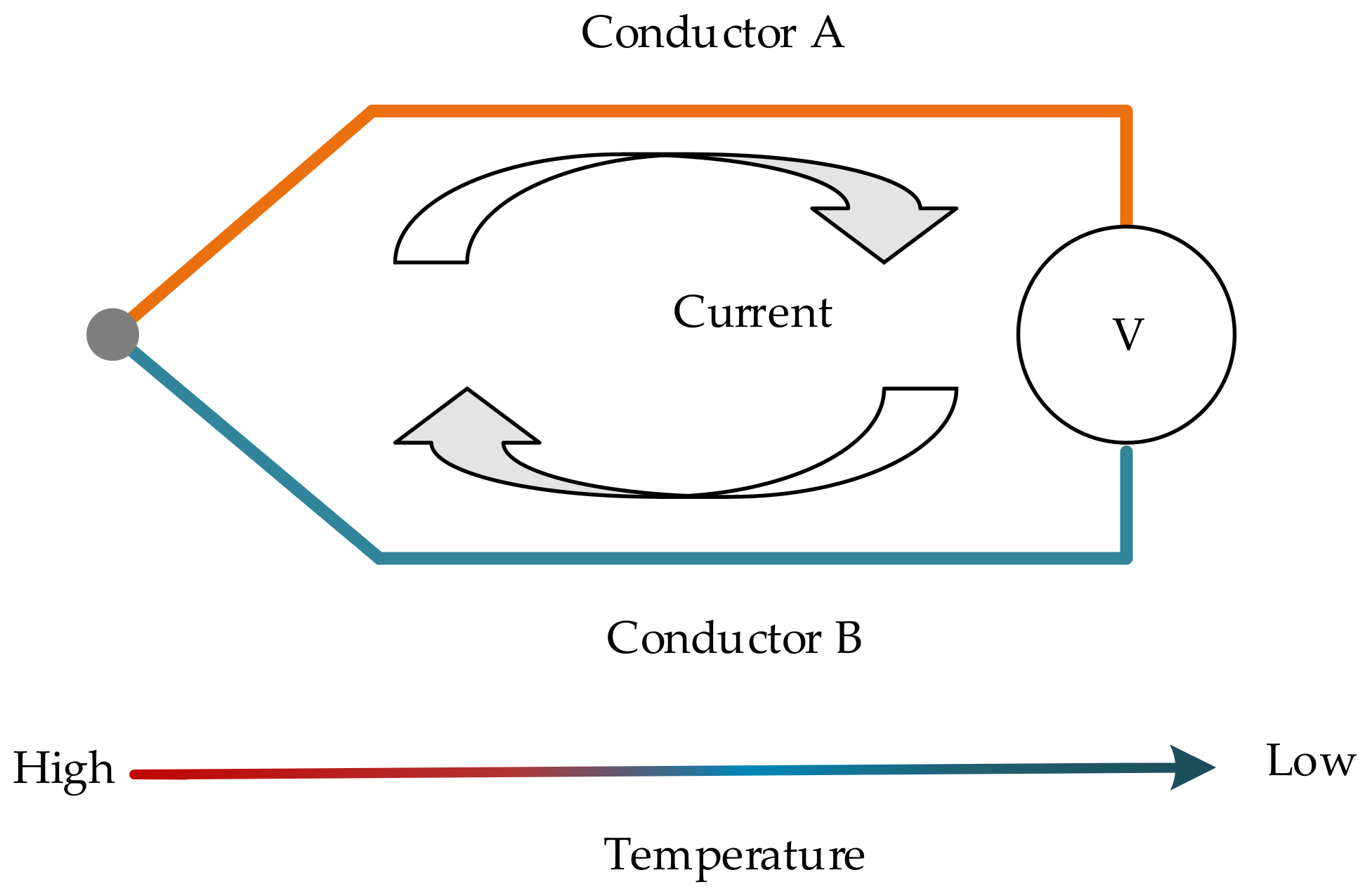

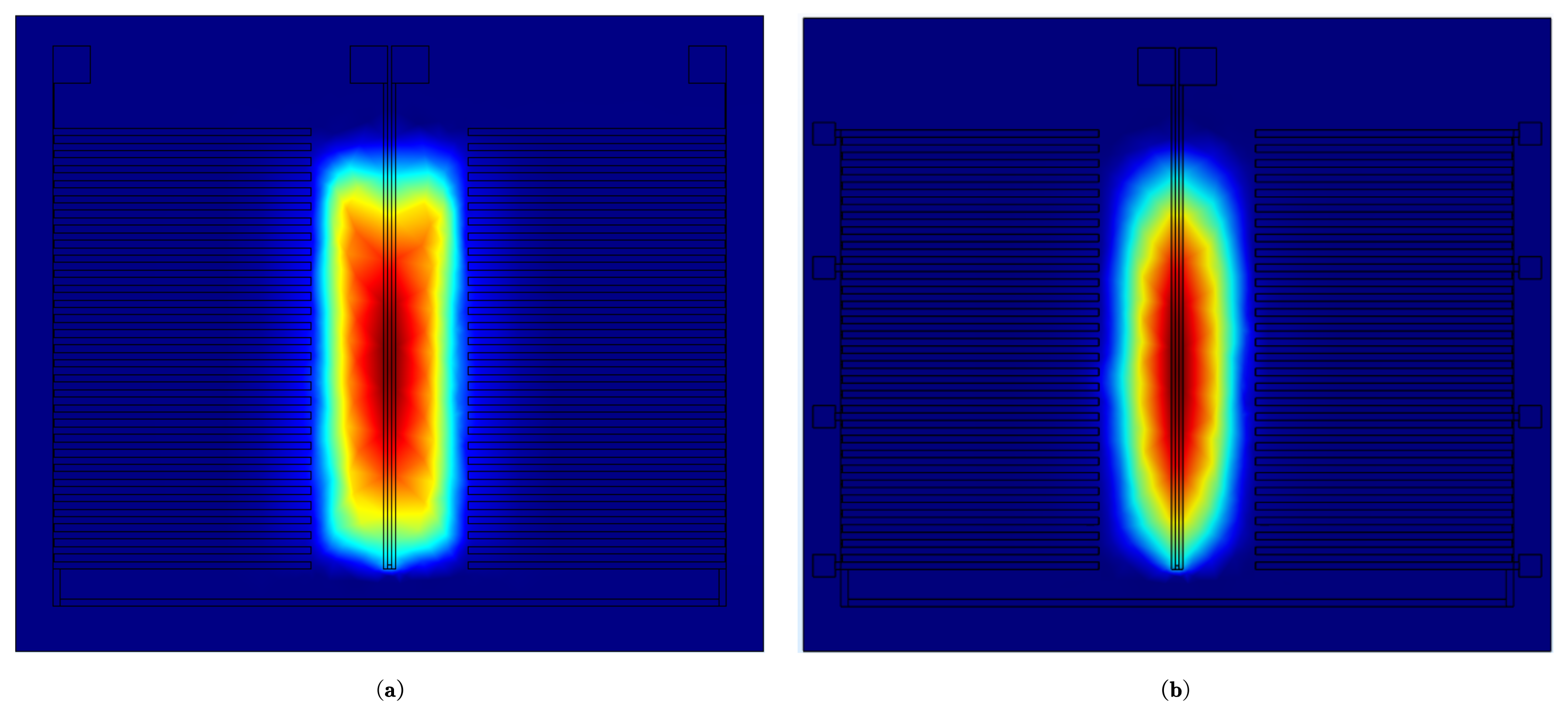

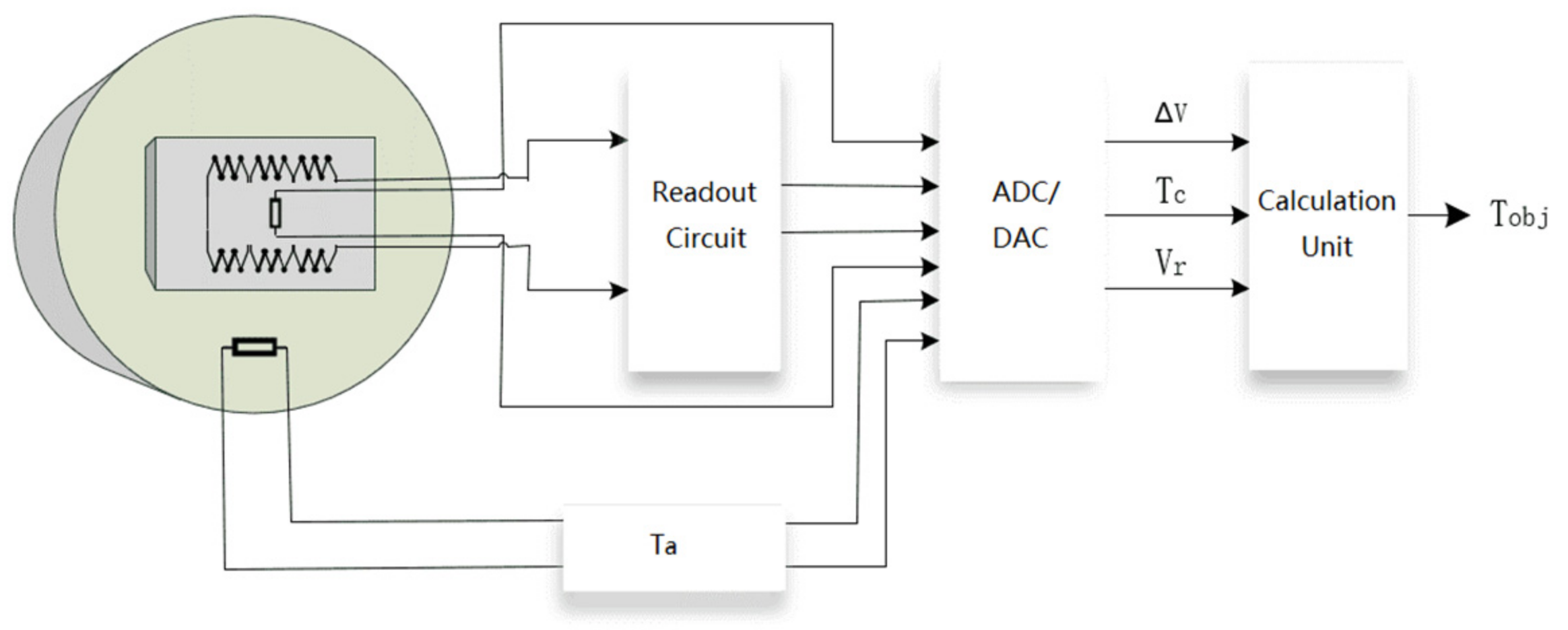
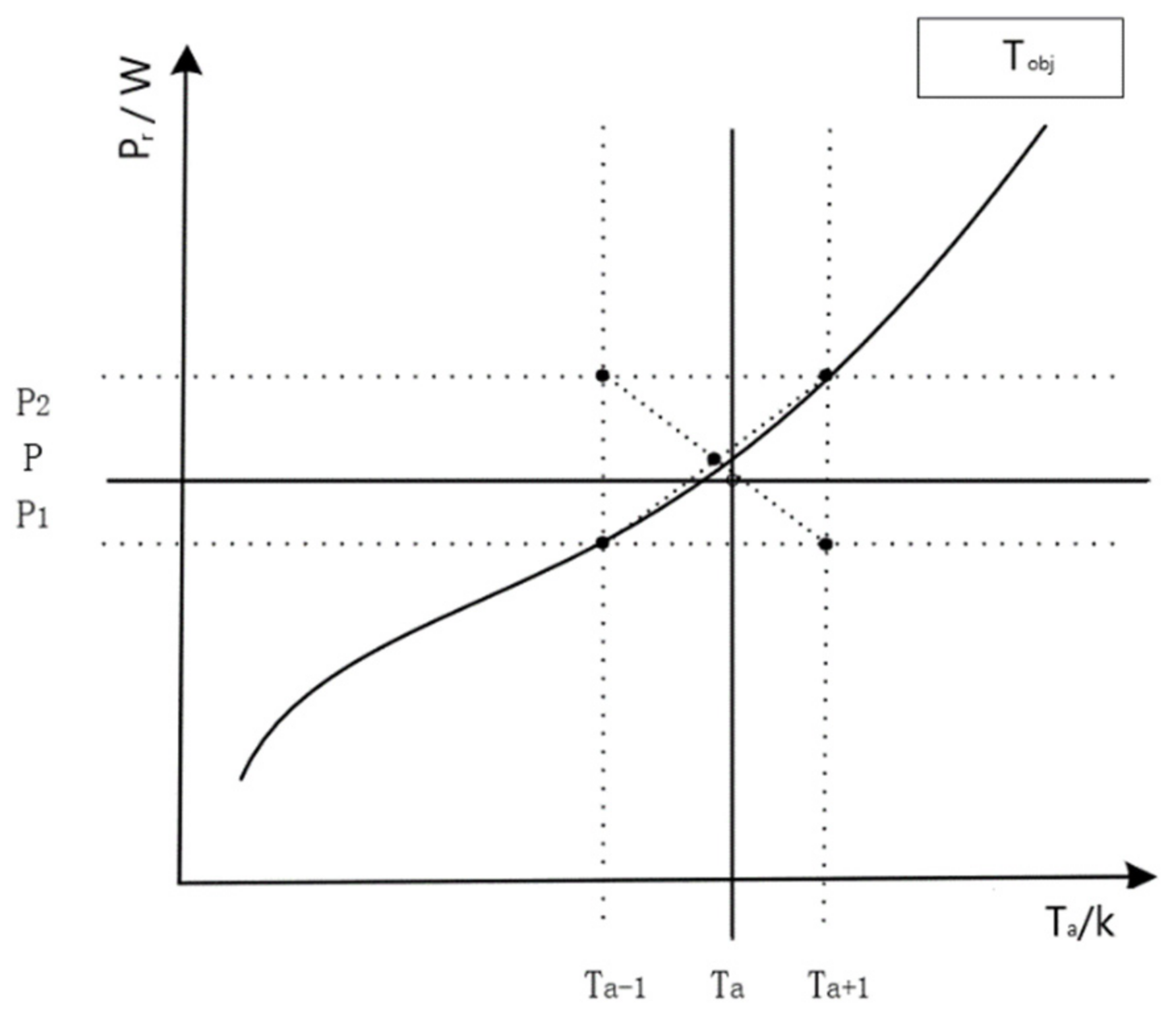

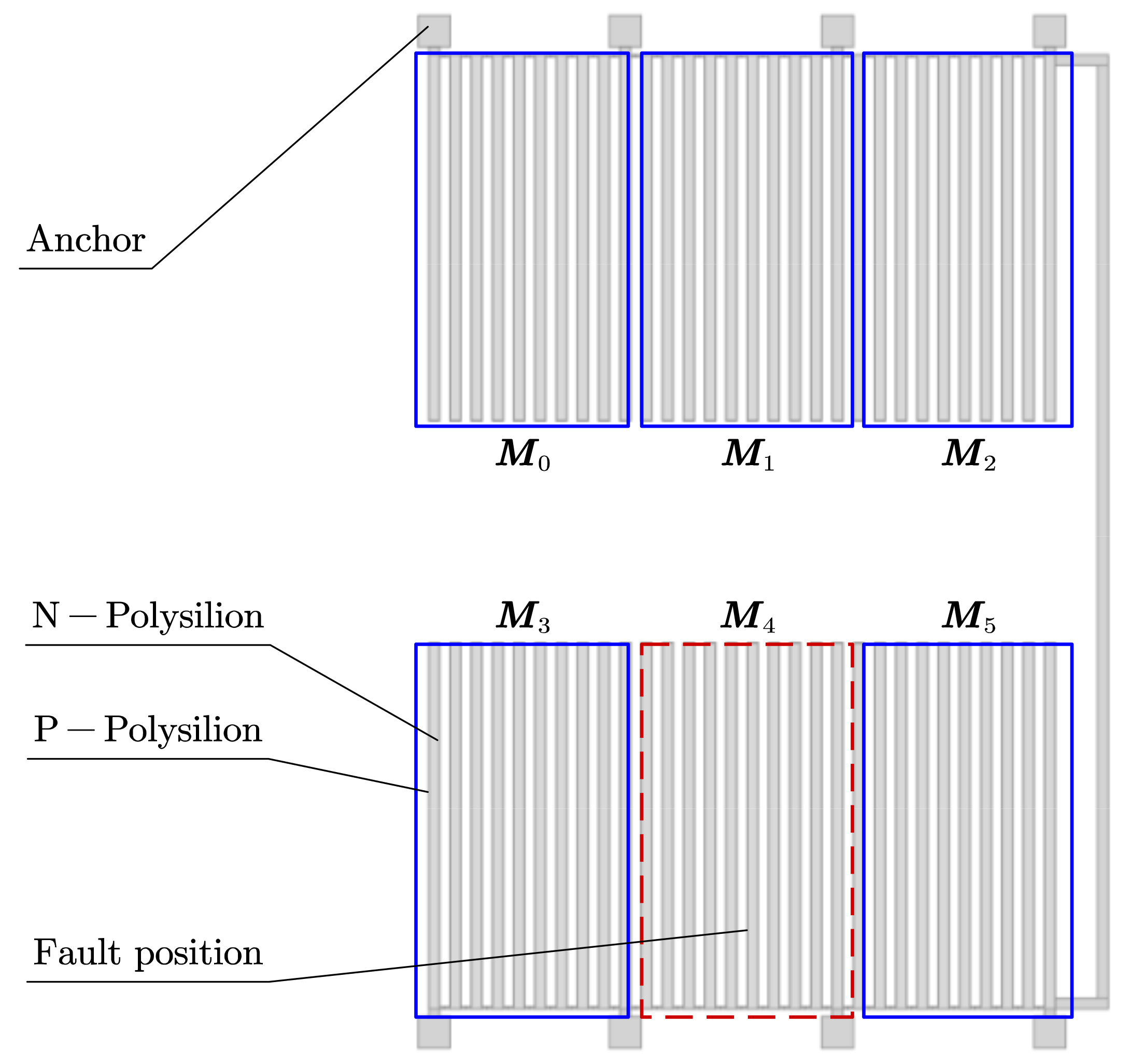




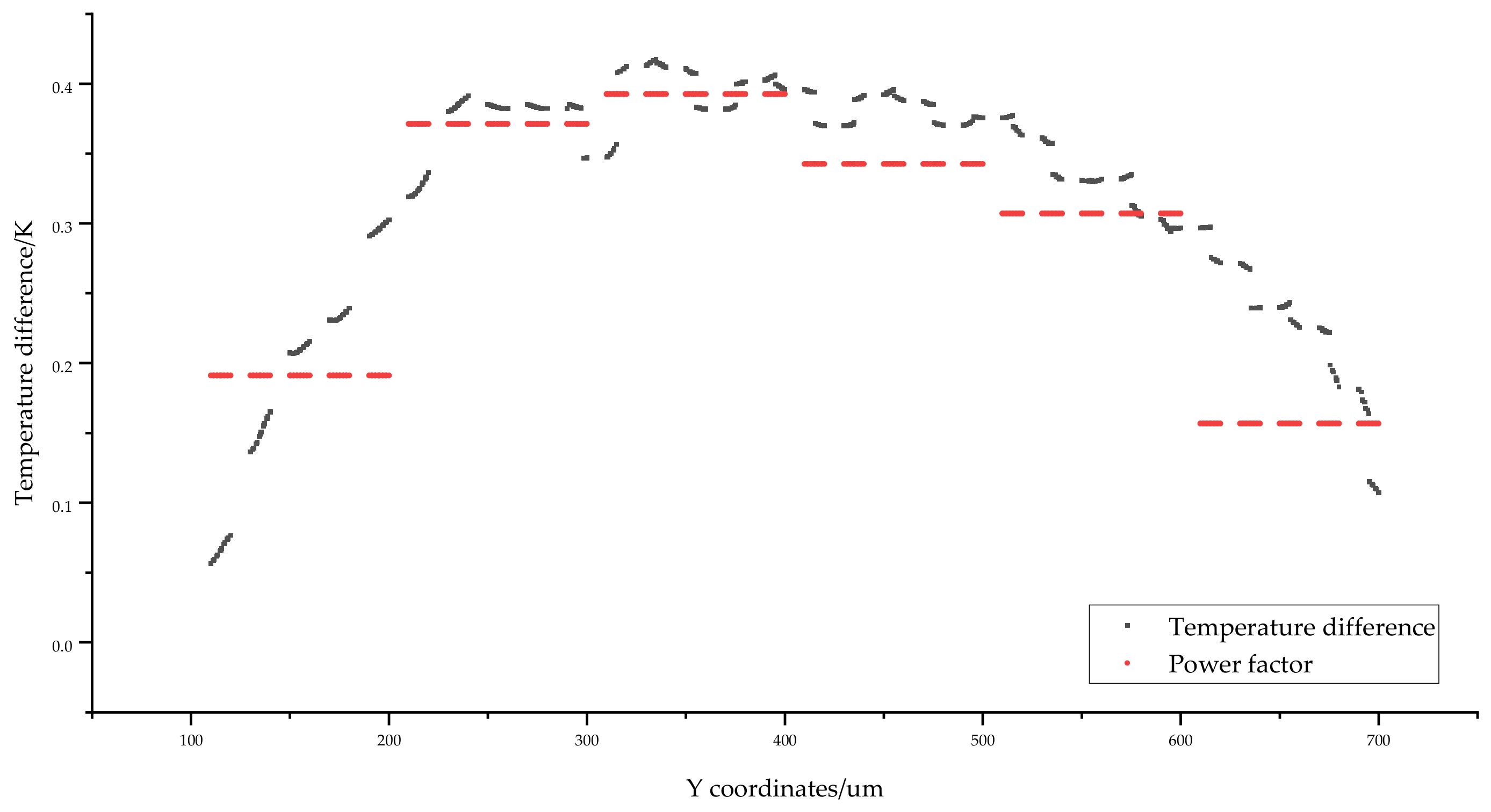
| Temperature/Stimulus Type | MAX(K) | MIN(K) |
|---|---|---|
| Physical stimulus | 306.5352 | 293.15 |
| Thermal stimulus | 312.9488 | 293.15 |
| Attribute and Material Name | Seebeck Coefficient (V/K) | Thermal Conductivity (W/m*K) | Density (Kg/m3) | Heat Capacity at Constant Pressure (J/(Kg*k)) | Conductivity (S/m) |
|---|---|---|---|---|---|
| Si | −450 × 10−6 | 131 | 2329 | 700 | 4.7 × 10−4 |
| SiO2 | - | 1.2 | 2650 | - | 0.904 |
| AI | −3.2 × 10−6 | 237 | 2700 | 904 | 35.5 × 106 |
| N-Polysilicon | −124.17 × 10−6 | 35 | 2320 | 678 | - |
| P-Polysilicon | 105.76 × 10−6 | 30 | 2320 | 678 | - |
| Structure Parameter | Dual Ends and Dual Layer Thermopile Structure |
|---|---|
| N-Polysilicon (L × W × H) | 345.4 × 10 × 0.8 μm3 |
| P-Polysilicon (L × W × H) | 355.4 × 10 × 0.8 μm3 |
| SiO2 (H) | 0.5 μm |
| Absorbed layer (L × W) | 400 × 600 μm2 |
| Number of thermocouples | 120 |
| Heater (L × W × H) | 650 × 5 × 0.4 μm3 |
| Position | 1 | 2 | 3 | 4 | 5 | 6 |
|---|---|---|---|---|---|---|
| Weights | 0.1085 | 0.2108 | 0.2229 | 0.1945 | 0.1744 | 0.0889 |
| Error | −0.0357 | 0.0637 | −0.0853 | −0.0547 | 0.1153 | −0.00233 |
| The Number of Defects | 1 | 2 | 3 | 4 | 5 | 6 |
|---|---|---|---|---|---|---|
| Good | 770 | 616 | 501 | 396 | 320 | 273 |
| Parametric | 63 | 14 | 4 | 4 | 0 | 1 |
| Catastrophic | 167 | 370 | 495 | 600 | 680 | 726 |
| Yield (before) | 77% | 61.6% | 50.1% | 39.6% | 32% | 27.3% |
| Yield (after) | 89.1% | 73.4% | 58.8% | 45.7% | 34.1% | 27.4% |
Publisher’s Note: MDPI stays neutral with regard to jurisdictional claims in published maps and institutional affiliations. |
© 2021 by the authors. Licensee MDPI, Basel, Switzerland. This article is an open access article distributed under the terms and conditions of the Creative Commons Attribution (CC BY) license (https://creativecommons.org/licenses/by/4.0/).
Share and Cite
Zhou, K.; Li, J.; Wang, W.; Chen, D. A Self-Test, Self-Calibration and Self-Repair Methodology of Thermopile Infrared Detector. Electronics 2021, 10, 1167. https://doi.org/10.3390/electronics10101167
Zhou K, Li J, Wang W, Chen D. A Self-Test, Self-Calibration and Self-Repair Methodology of Thermopile Infrared Detector. Electronics. 2021; 10(10):1167. https://doi.org/10.3390/electronics10101167
Chicago/Turabian StyleZhou, Kaiyue, Jia Li, Weibing Wang, and Dapeng Chen. 2021. "A Self-Test, Self-Calibration and Self-Repair Methodology of Thermopile Infrared Detector" Electronics 10, no. 10: 1167. https://doi.org/10.3390/electronics10101167
APA StyleZhou, K., Li, J., Wang, W., & Chen, D. (2021). A Self-Test, Self-Calibration and Self-Repair Methodology of Thermopile Infrared Detector. Electronics, 10(10), 1167. https://doi.org/10.3390/electronics10101167





